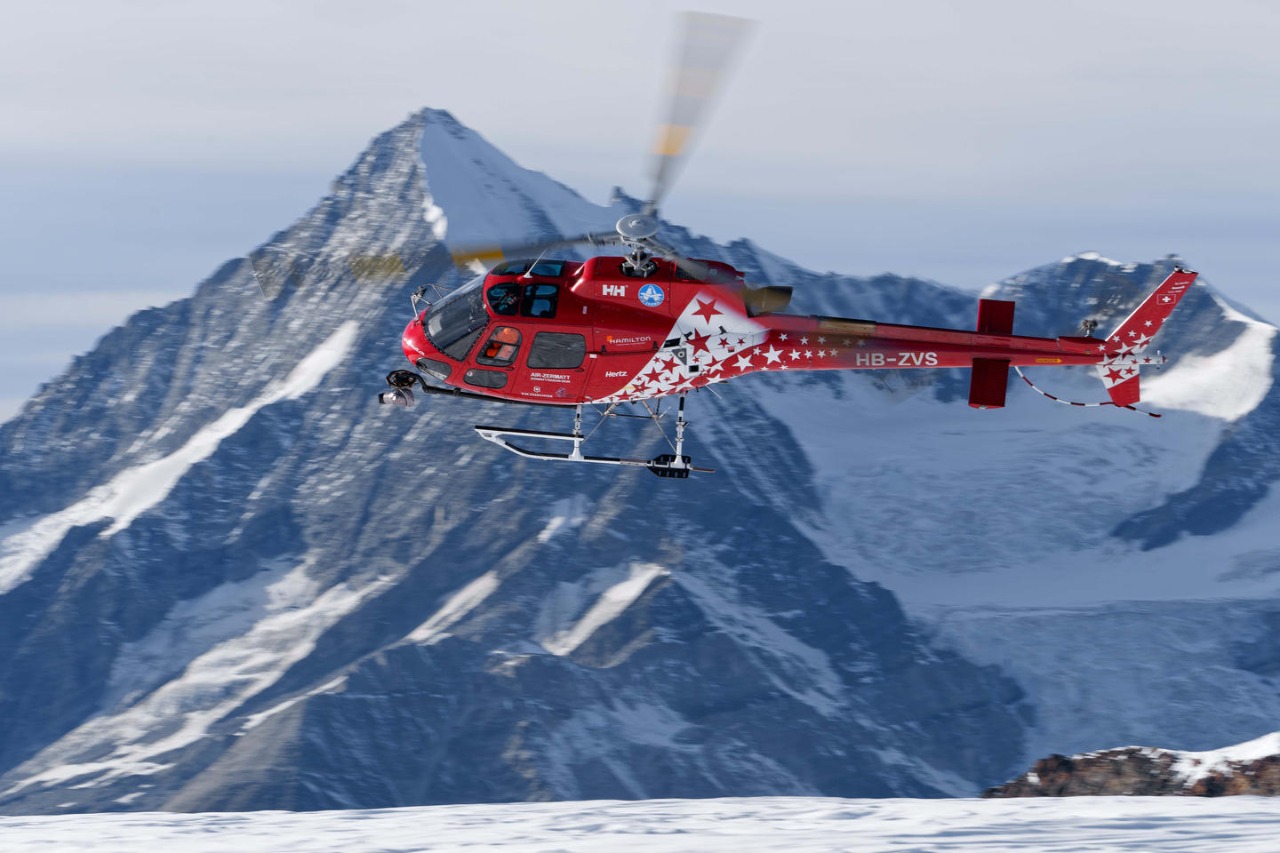Reliability and power are the name of the game in the Swiss Alps, where Swiss helicopter operator Air Zermatt has been making its mark since 1968. In such challenging mountain environments, Air Zermatt’s red and white H125s reign supreme. So what better successor to the H125 than the same “upgraded” aircraft?

Of the six H125s in the fleet owned by Air Zermatt, the four most recent aircraft have gone through the retrofit of their VEMD (Vehicle and Engine Multifunctional Display), enabling them to use the full power of the Arriel 2D turbine. “We were impressed by the H125 upgrade offered by Airbus Helicopters,” explains Gerold Biner, pilot and CEO of Air Zermatt. “The power increase gives us a lot of new possibilities and we were quickly able to see and feel the difference, especially at our working altitudes of 2,000 to 4,000 metres.”
This upgrade, available since 2021 on every baseline H125 – and in retrofit on H125s equipped with an Arriel 2D engine – allows the H125 to make full use of its engine power through a software change to its VEMD. In doing so, the aircraft increases its capacity, depending on flight conditions, up to +120 kg in the cabin or +145 kg on the sling. For Air Zermatt, these figures are significant, as 60% of its business is construction work, often using slings. The remaining 40% is divided equally between rescue missions, sightseeing flights, taxi flights and heli-skiing.
“Recently I had to take an 880 kg compressor to a construction site at 2,700 m,” says Biner. “It was complicated, I was really at the limit with the older version of the H125, but I saw one of our newer H125s nearby with my colleague Benjamin Zenhaeusern at the controls, so I called him…”
“I told Gerold I could try it with my aircraft which had the new VEMD. I was able to lift the compressor with no problem, even with 50 litres more fuel onboard than Gerold,” says Benjamin Zenhaeusern.
“He did it easily, without any problems,” says Biner, “For me, the proof was there. Our older H125s work very well, but the difference with the power upgrade was significant.”
For Zenhaeusern, the new VEMD and increased power not only benefit pilot safety, but also the safety of ground crews: “The ground crews also stand to gain when the pilot can lift the load and exit a confined area in complete safety…there is less stress for everyone.”
René Lauber, the Head of Maintenance at Air Zermatt, managed the modernisation of the aircraft. He explains that he had two options: “We could either do a standard exchange of the VEMD or send our equipment back to Thales to load the new software version. As we wanted the VEMDs very quickly, we opted for a standard exchange.”
Air Zermatt received the new boxes 48 hours after ordering them. One hour’s work was enough to install them, and this was done at the end of the day, after the flights. “It was a very easy job, which allowed us to be operational with the equipment the next morning,” says Lauber.
The final word goes to Biner, who sees the modernised H125 as “a worthy successor to the Lama, which has been our workhorse for over 50 years. We can now turn the page and say that we have found a great successor!”

